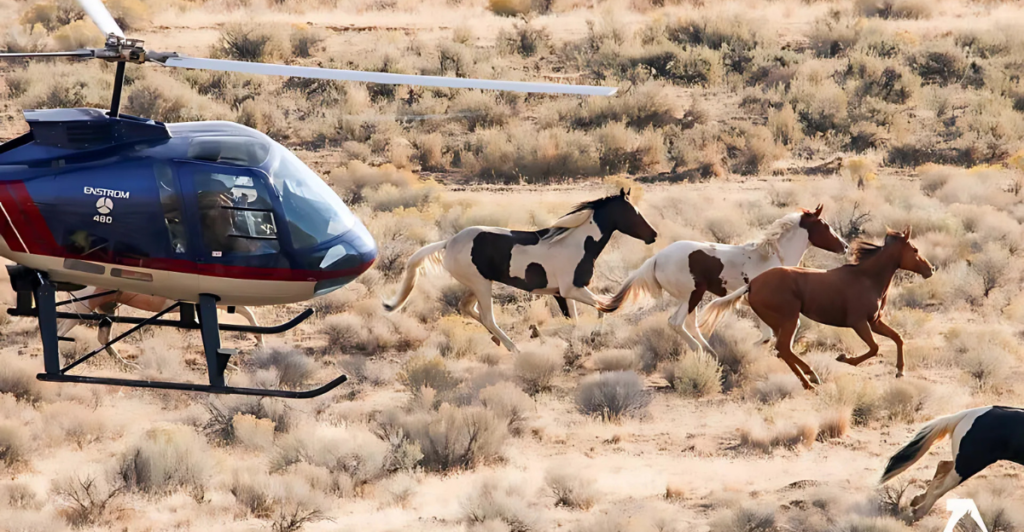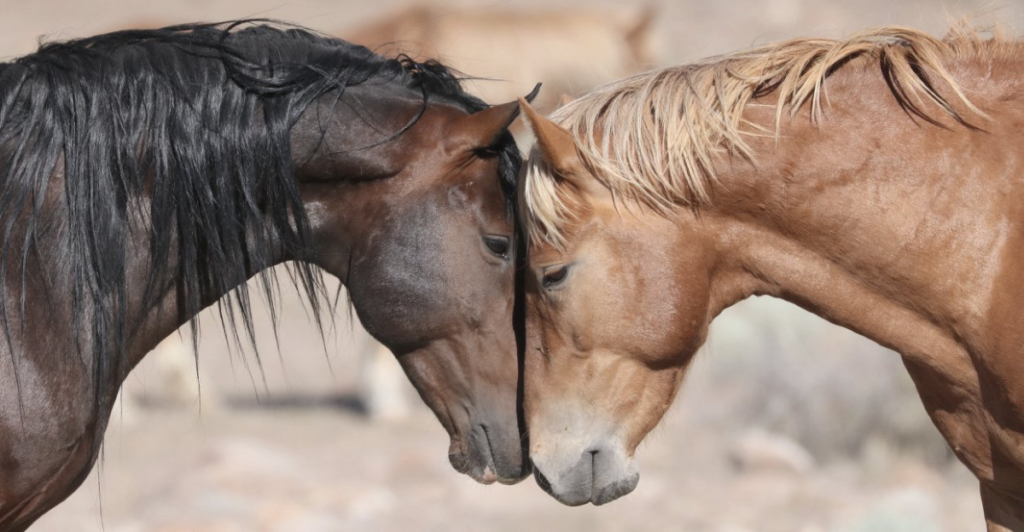
Wild horses, often romanticized as symbols of freedom and the untamed spirit of the American West, are a rare sight in today’s United States. Once roaming in vast herds across the country, wild horses have been steadily displaced due to urban development, ranching, and government culling programs. However, a few pockets of the country still offer a glimpse into this living heritage. In 2024, new statistics reveal the challenges and triumphs of conserving these majestic animals.
Where Are Wild Horses Found Today?

According to the Bureau of Land Management (BLM), an estimated 68,000 wild horses and burros roam public lands across ten Western states, including Nevada, Wyoming, and Montana. Nevada alone is home to more than half of the nation’s wild horse population, earning it the nickname “The Wild Horse State.”
Outside of the West, some isolated herds exist along the Atlantic Coast. The famous Chincoteague ponies of Virginia and Maryland’s Assateague Island continue to captivate tourists and locals alike. Meanwhile, in North Carolina, the Corolla wild horses trace their lineage back to Spanish mustangs brought to America in the 1500s.
The Fight for Habitat

In 2024, wild horses face increasing threats from habitat loss and resource competition. Grazing permits for cattle and sheep often take precedence over wild horse habitats on public lands. This year, the BLM reports that over 155 million acres of public land are leased to livestock, compared to the 26.9 million acres allocated to wild horse herds.
The Fight For Freedom

Advocacy groups like the American Wild Horse Campaign argue that wild horses are unfairly scapegoated for overgrazing issues caused primarily by commercial livestock. The debate often pits ranchers against conservationists, with federal agencies caught in the middle.
How do these groups keep everybody happy?
Herd Management and Controversy

Wild horses are managed under the Wild Free-Roaming Horses and Burros Act of 1971, which protects these animals as “living symbols of the historic and pioneer spirit of the West.” However, annual roundups—where horses are captured and removed from the wild—remain a contentious issue.
In 2024, the BLM plans to remove over 15,000 wild horses from public lands to address overpopulation concerns. Critics argue these roundups are inhumane, with helicopter chases causing undue stress and injury. Proponents, however, insist the removals are necessary to prevent resource depletion and starvation among the herds.
Adoption Programs: A Double-Edged Sword

To manage growing populations, the BLM has intensified its wild horse adoption program. This year, adoption incentives include up to $1,000 for individuals willing to take in a mustang. While this has helped place thousands of horses in new homes, it has also led to concerns about their welfare.
Reports of adopted horses ending up in slaughterhouses have prompted stricter screening processes. Advocates are calling for more robust long-term protections for adopted animals to ensure they are not sold into harmful conditions.
Tourism and Economic Impact

Wild horses are more than just a conservation issue; they are also a significant draw for tourism. Locations like Assateague Island National Seashore attract over 2 million visitors annually, many eager to catch a glimpse of the island’s wild ponies. Similarly, the Pryor Mountains in Montana, home to a famous herd of Spanish mustangs, see thousands of visitors each year.
According to the National Park Service, wild horse tourism generates millions in revenue for local economies, from guided tours to lodging and dining. In a time when many rural areas struggle economically, preserving wild horses could be seen as an investment in sustainable tourism.
Cultural and Historical Significance

Wild horses hold a special place in American culture and history. Indigenous peoples revered horses as sacred beings, while pioneers relied on their strength and endurance. Today, these animals continue to inspire artists, writers, and filmmakers.
Programs like the Wild Horse and Burro Youth Challenge aim to educate young people about the importance of wild horse conservation. By fostering a connection between future generations and these animals, advocates hope to ensure their survival for decades to come.
Scientific Research and Innovation

In 2024, scientists are leveraging technology to better understand and manage wild horse populations. GPS tracking collars, drone surveillance, and genetic testing are helping researchers monitor herd dynamics, migration patterns, and genetic diversity.
One promising development is the use of fertility control vaccines to humanely manage herd sizes. The Porcine Zona Pellucida (PZP) vaccine, for example, has been shown to effectively reduce reproduction rates without harming the animals. However, funding and logistical challenges have limited its widespread implementation.
Success Stories and Sanctuaries

Despite the challenges, there are success stories. Nonprofit organizations like Return to Freedom and the Black Hills Wild Horse Sanctuary provide safe havens for wild horses removed from public lands. In 2024, these sanctuaries house over 4,000 horses, offering them a second chance at life.
Additionally, collaborative efforts between the government and private landowners have resulted in innovative solutions. In Nevada, the Fish Springs herd thrives thanks to partnerships between the BLM and local advocates who oversee the horses’ well-being.
The Role of Advocacy

Public pressure has played a pivotal role in shaping wild horse policies. Social media campaigns and viral videos of roundups have galvanized public opinion, leading to increased scrutiny of government practices.
In 2024, petitions with over 1 million signatures were delivered to Congress, demanding an end to inhumane roundups and greater protections for wild horses. This growing movement underscores the importance of public engagement in conservation efforts.
What Lies Ahead?

The future of America’s wild horses remains uncertain. Balancing the needs of wildlife, livestock, and human communities is no easy task. However, ongoing efforts to protect these animals offer hope.
As one advocate put it, “Wild horses are a living testament to America’s spirit. Losing them would mean losing a part of ourselves.”
How You Can Help

For those inspired to take action, there are many ways to support wild horse conservation in 2024. Volunteering at sanctuaries, adopting a mustang, or donating to organizations like the Wild Horse Preservation Campaign are just a few options.
Additionally, staying informed and advocating for humane policies can make a significant difference. Together, we can ensure that wild horses remain a vibrant part of America’s landscape for generations to come.
Stay connected with us for more stories like this! Follow us to get the latest updates or hit the Follow button at the top of this article, and let us know what you think by leaving your feedback below. We’d love to hear from you!







